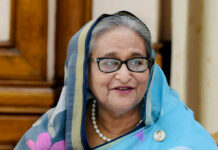Why journalism can no longer bank on wrong economics

What does the future hold for news media?
Today, everyone who makes and breaks the news understands that the mainstream media has lost its steam. Ordinary newspaper readers and television viewers need not observe the historical trends of the mass media to conclude how its power has been reduced to an anarchy of information regime.
Professionals, however, experience the reality that the media as an industry in its current shape is on the wane.
Journalism — its style, reach, angles of reporting and analysis, selection of issues, story-telling method, etc — may be blamed partly for the declining circulation of printed newspapers.
Angry losers in the whirlwind of changing media dynamics have the excuse to curse the availability of smartphones with internet connections which simultaneously kill and accommodate in itself other forms of the media, namely newspapers, radio, television, and cinema.
Save journalism research at top-ranking universities and the use of content analytics in the newsrooms of influential organizations, journalist bosses in the so-called underdeveloped countries are apparently resigned to the situation, aggravated, by now, by massive falls in revenue earnings.
They piously talk about remedies, but hardly take any initiative to review what has led to their failing to meet expenses with income after years of business success.
This revenue uncertainty reveals that many old investors did not ask themselves point blank why they were going to open the bakery-like shops that would sell “perishable” products like daily newspapers at a price lower than the cost of production.
Also in the past, as do most of them still, they went with the tide, fixing their eyes on easy money, expected to be coming from outside the process of sales and production.
If their mission was to deliver reports, features, and articles as social service, the “old” entrepreneurs had failed to foresee how their next generation of “volunteers” would be compensated for their passion, should there be changes in the funding mechanism, mainly subject to the behaviour of advertisers.
Newspaper revenues in the second half of the 20th century had been obviously a matter of such consensus that media leaders could not anticipate that advertising revenue would ever fall. Otherwise, why couldn’t even the big players worldwide, with hindsight, come up with any solution to the ad revenue crisis that is sustainable and can be replicated elsewhere?
To a naive mind, the puzzle is how the projected growth of the media, and also their sustenance during tough times, was based on the assumption that ads would continue to flow, and that the economy of each nation would grow until a great disaster.
To the media managers, their age-old practice suggests that the saturation point of economic development, which would diminish the relevance of frequent advertising, was deemed an unlikely phenomenon.
The consequence of such a policy of running a business, if it is really so in its truest sense, without adequate return from the sales, has led to the closure of hundreds of newspapers around the world, and further loss of jobs in the existing media organizations.
Why won’t a spoon-fed industry shrink if economies are in the doldrums and if sponsorship doesn’t seem to be lucrative to the sponsors? And windows of earning revenue in relation to production and pricing of newspapers were also not properly explored earlier, during the heyday.
Before what may be reckoned the media meltdown, politically active, culturally selective, socially enthusiastic, would-be intellectual, and career-wise ambitious young men and women joined the “noble” profession, though a section of them had never been journalists per se.
The “bohemian” newsmen just did not deliberate about who would remunerate them for their collective service to society. They tried journalism in line with written or unwritten editorial policies, seniors’ guidance or dictation, level of understanding of the respective houses, and sometimes whims of friends, but didn’t care about whether the advertisers would someday value their jobs at all, or whether there would be innumerable advertising sources to help make up for the losses made by newspapers.
Not too many journalists asked: “What if” they distanced them from the people or from truth?
Readers, as the customers at the corporate age, would have paid fully for “commercial” operation of the newspapers, had it been the rule of the game. Dailies, weeklies, and periodicals, published by patrons and as spokespersons of political parties, made attempts to recover the costs by means of sales push among party cadres, supporters, and sympathizers, as practiced in post-colonial Asia and on university campuses.
That kind of financial support was not considered feasible, as the expenses rose for a variety of reasons. All media outlets, except the ones run by the state, did show their confidence in the burgeoning ad market, practically accepting their excessive dependence on corporations and consumerist businesses.
Accordingly, the media moguls in the West had proved for decades that newspapers could be a highly profitable business.
The widely circulated newspapers had, by and large, reaped higher benefits from the ad market. But they barely noticed that they had actually sold out the public trust they earned to the advertisers.
Typical business newspapers had, at least, stuck to their basics by serving the stakeholders, not the commoners, in exchange for subscription fees and advertising money.
Some merchants of journalism didn’t have to face mass trial for thoughtlessly promoting harmful products and exploitative services through publishing or broadcasting ads.
Businesswise, the financers of popular dailies or weeklies had done an injustice to themselves by not charging the readers for realizing the money they spent on publishing the hard copies.
The media houses in South Asia, whatever may be their financial status, won’t disclose their income and expenditure reports, unlike the Western practice.
Informally, a number of editors, including two from India said during an interaction in Dhaka about two years ago that they were fighting for saving newspapers from the slump in ad revenue.
It is also gathered unofficially, that in Bangladesh, a country of almost 165 million Bangla-speaking people, one copy of a major local daily is produced at a cost of approximately Tk24, while the subscribers pay Tk10, and the company gets Tk7 for each copy.
Despite the high percentage of loss, if ad revenue is not credited to the turnover, that newspaper is still making profits only to see the twilight of its hegemony, with fluctuations in ad flow at a time when the country officially records about 8% growth in gross domestic product (GDP).
Globally, let me argue, the newspaper companies had effectively distorted the market, in the form of dumping or price war of some sort, by financing the losses with money derived from the ads. The revenue they generated was mostly the fruit of other economic activities; only a minor portion of their income was accrued from sales of printed copies.
“By the mid-20th century, advertisements brought in about 80% of newspaper revenue,” reads a NiemanLab article titled “Why the ‘golden age’ of newspapers was the exception, not the rule,” written by Heidi Tworek and John Maxwell Hamilton.
In the event of chronic losses incurred by third-world newspapers, and of course televisions, the media company owners subsidized the cost of operations if they saw that loss-financing would pay off otherwise — getting tax rebates, government subsidies, official ads, cheaper newsprint, attaining social and political influence, and shielding business interests — depending on the benefits that were up for grabs in the country of publication at that point in time.
Once the economic growth stagnated, and so did the flow of advertisements, the newspapers started struggling, breaking the century’s illusion among the predatory investors.
Corporate interest of running the media with “subsidy” came down, due to unexpected development that virtually brought an end to the era of profit-making from ads.
By 2017, the report on “World Press Trends 2018: Facts and Figures” shows the annual income of global newspapers and news media from circulation ($87.2bn) exceeded advertising revenue ($67.8bn).
What will happen to the media if the economies tumble, as many fear the worst after the 2008 financial crisis has not yet come?
Having cashed in on the capitalist economic order following the industrial revolution, the media industry has eventually found no suitable answer to the new technology that has changed the entire media landscape, as well as the dynamics of economies which supported “journalism” the way it was being pursued.
Journalism, as a literary genre and social activism, also thrived on certain sugarcoated ideals such as “truth and accuracy” and “loyalty to people,” in an age of a rise of liberal democracy, when the culture of dominance of ads, corporate choices of doing business, the media’s hobnobbing with powerful quarters, and personal ego of some of its practitioners still remained dominant.
“Freedom of the press belongs to those who own one,” said Christopher Harper, quoting AJ Leibling as saying in a 1998 speech on “Journalism in a Digital Age” at the Democracy and Digital Media Conference at MIT. In most places in the world today, media freedom is shrinking.
Thus, the masses were tactfully left out of day-to-day coverage of events of the establishments, a sense of deprivation that the individuals became critically aware of when they discovered their rise on social media.
Apart from flaws in the journalistic pursuit, I think, two key factors — a cost-escalating global economic environment and the explosion of the internet — have exposed the challenges that have shaken conventional media.
Since the industry leaders had already sold out certain amounts of “freedom of expression” to the benefactors, the people were instinctively seeking salvation from being hostage to propaganda, and they largely withdrew themselves the moment they were endowed with the capacity to reach their audience and interact with each other without the help of the “old media.”
Looking at the statistics of the desertion of millions of readers and viewers, the advertisers, too, have begun to shift their focus to the new destination — online.
Paradoxically, the ad givers are not willing to offer the same rates to digital media.
The men behind the newspapers have, in the meantime, forgotten or lost their courage to believe that the readers should duly pay for receiving journalistic services or consuming media products.
The paywall, introduced by The New York Times and a few others, for example, for accessing their stories on the website, is yet to be tested as a viable option for the newspapers in continents other than Europe and North America.
Newsweek magazine had, in 2014, worked out a business model that does not rely heavily on ad revenue. When its new owners re-launched its print edition after ceasing publication in 2012, they said the company aimed to generate as much as 90% of the income for its print edition from subscription revenue.
The Guardian is understandably experimenting with a unique model, as “more than 800,000 people now financially support” the newspaper. The Guardian’s case confirms that people are ready to donate under no compulsion if they feel journalism is valuable to them.
How journalism has been more relevant in today’s inter-connected world of information, misinformation, and disinformation won’t be seen as anything rhetorical, if society owns the media.
In the coming days, alternative ways of fund-raising, alongside rational subscription fees, may be required to get rid of ad dependency, and support fair investigation, accurate documentation of facts, and independent reporting.
Some serious people honestly believe journalists have to deal with a lot of questions from a hostile audience to survive the next 5-10 years, and set in motion the new revenue model compatible with professional journalism, the ultimate answer to people’s needs.
Khawaza Main Uddin, winner of the UN MDG Award, DAJA Award, and WFP Award twice, is a journalist. He can be contacted at khawaza@gmail.com.









